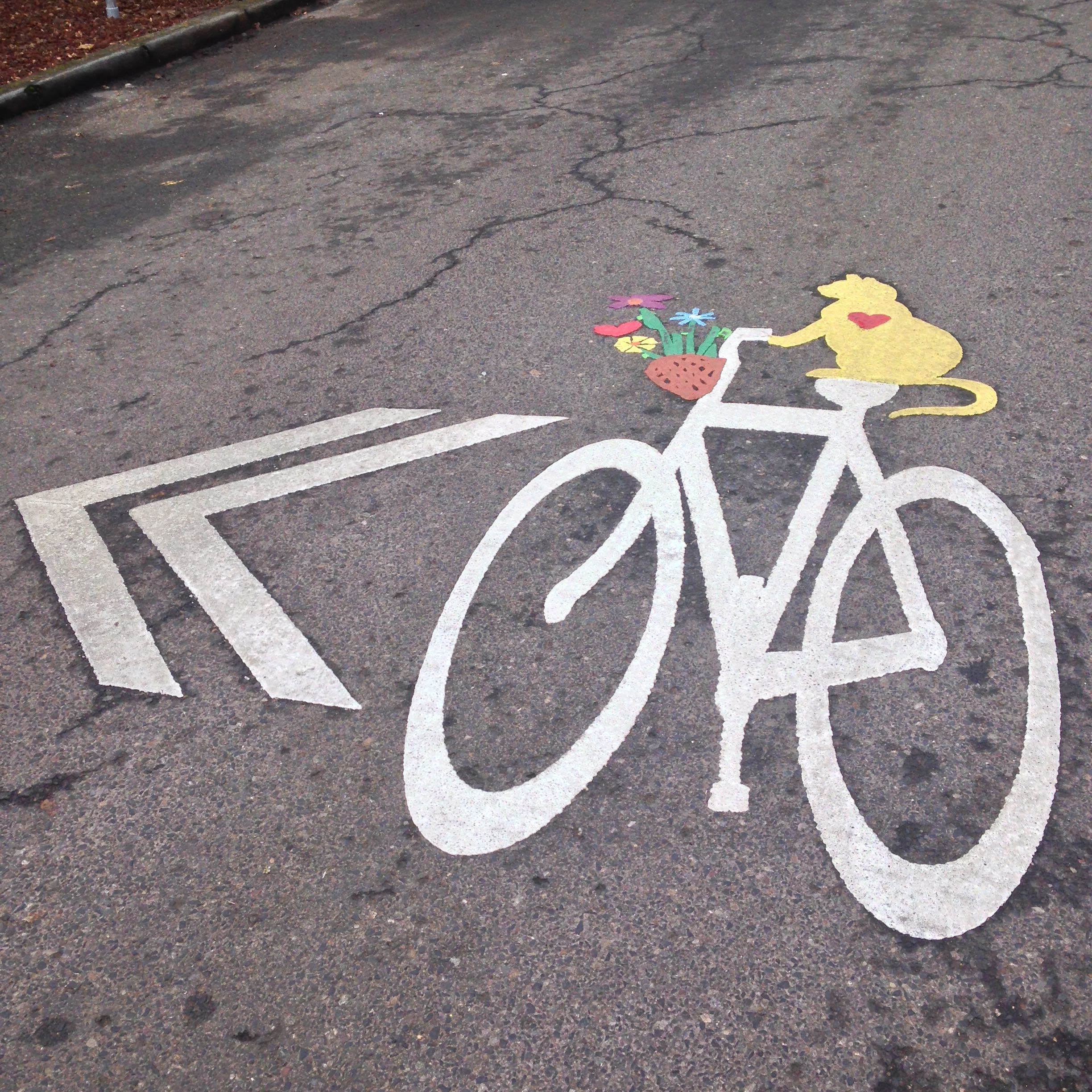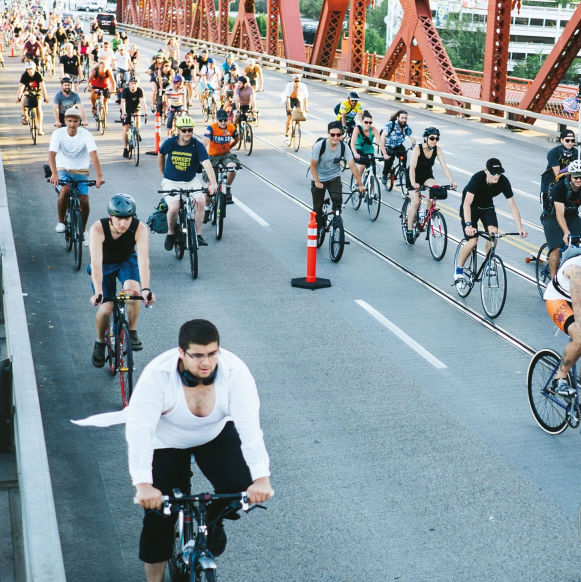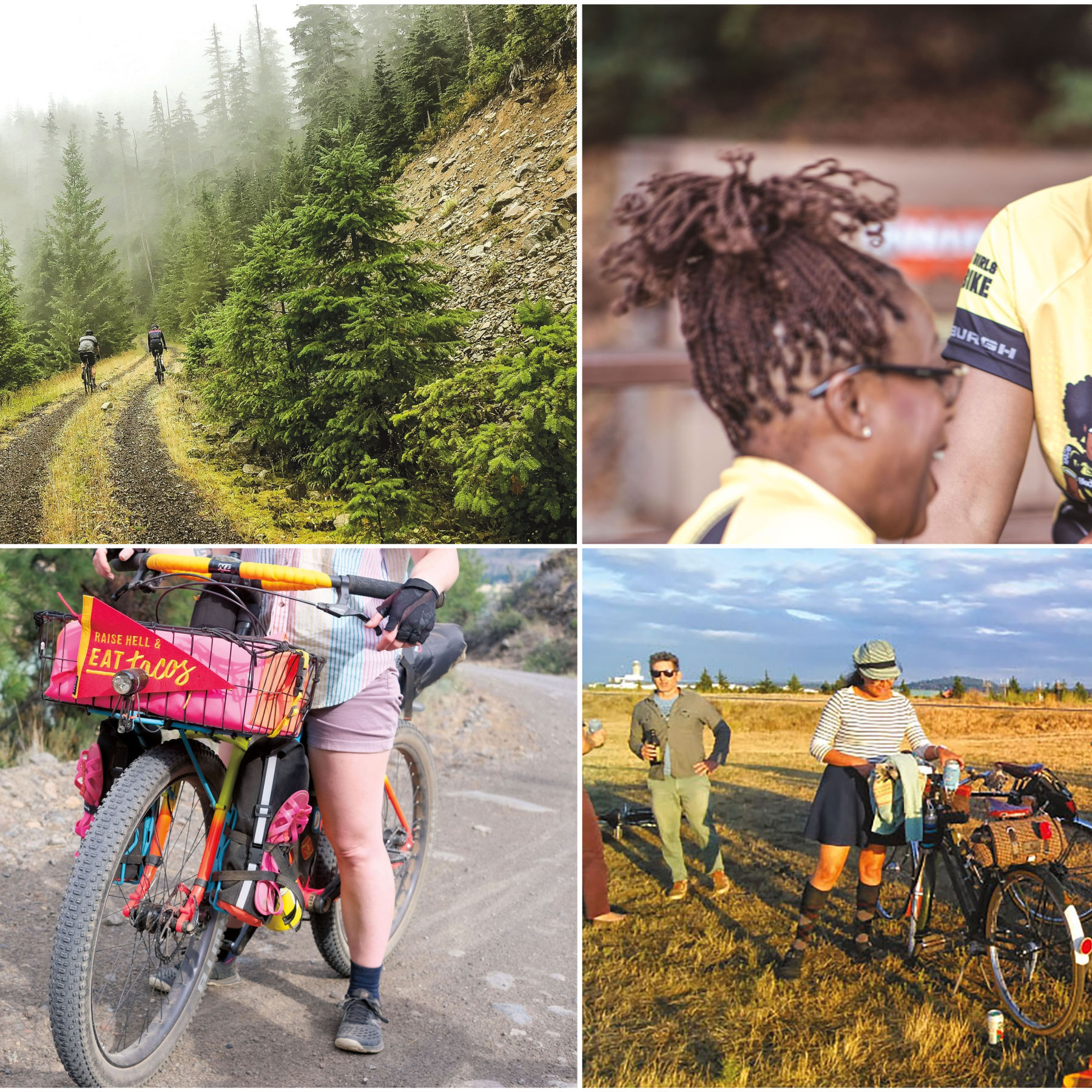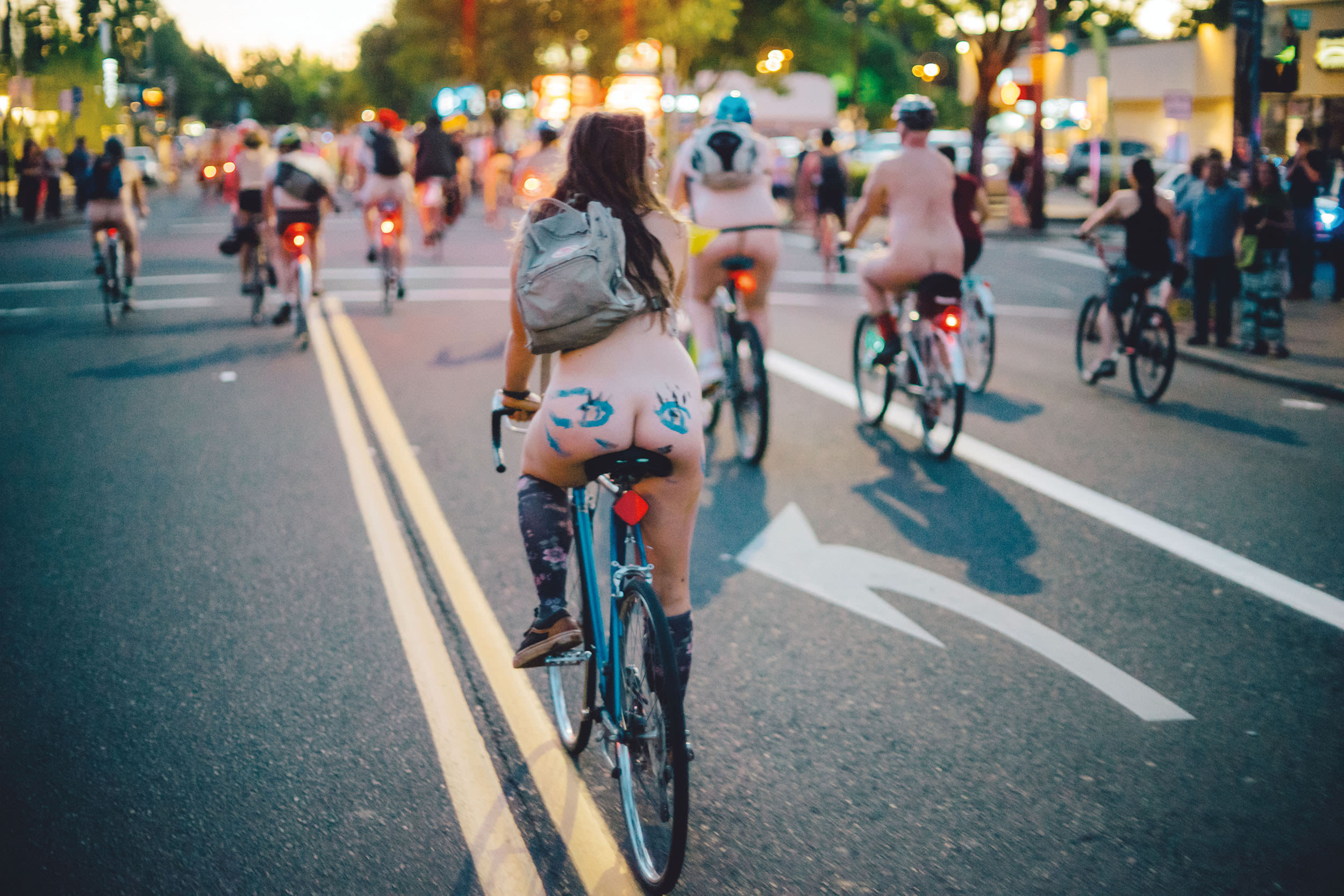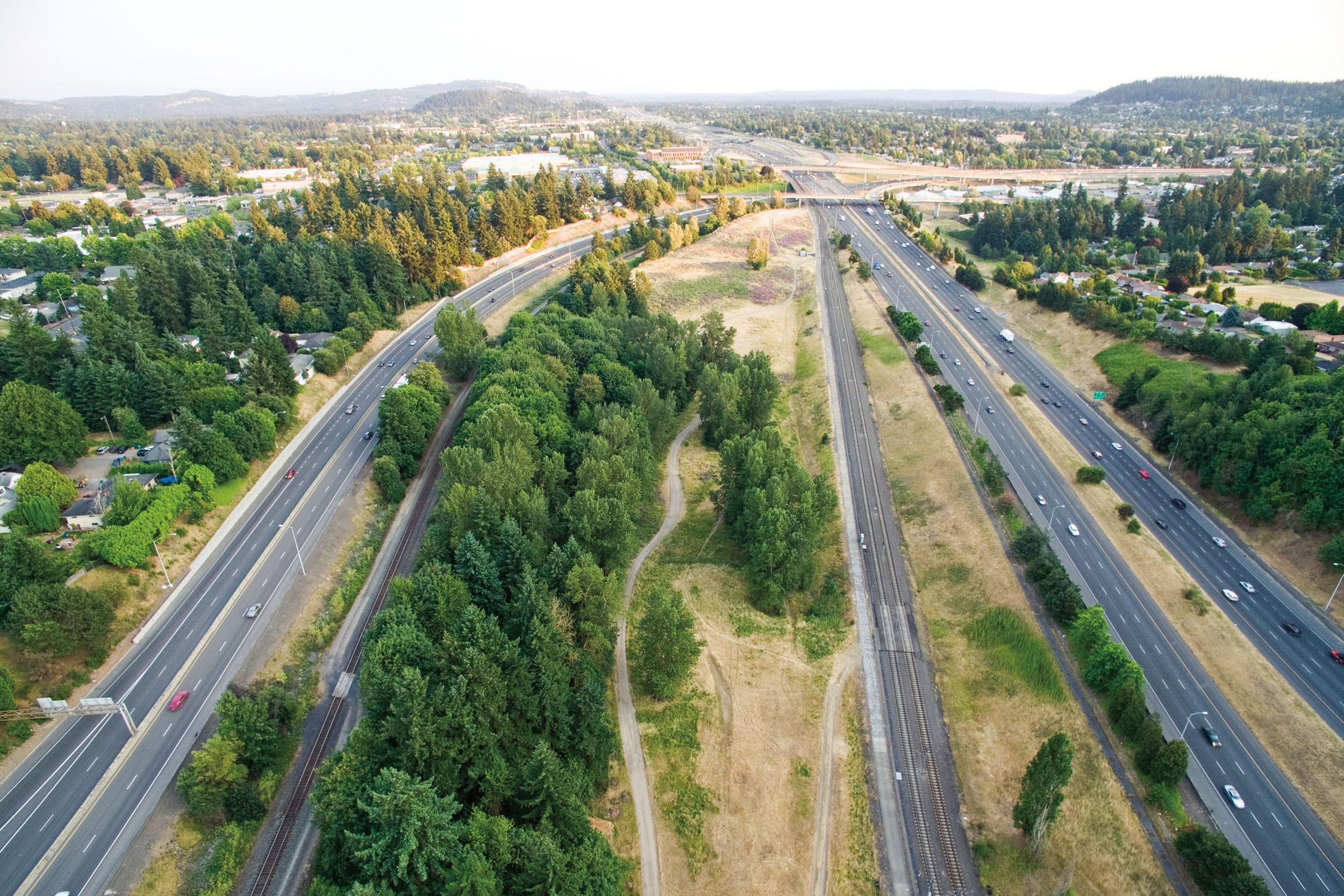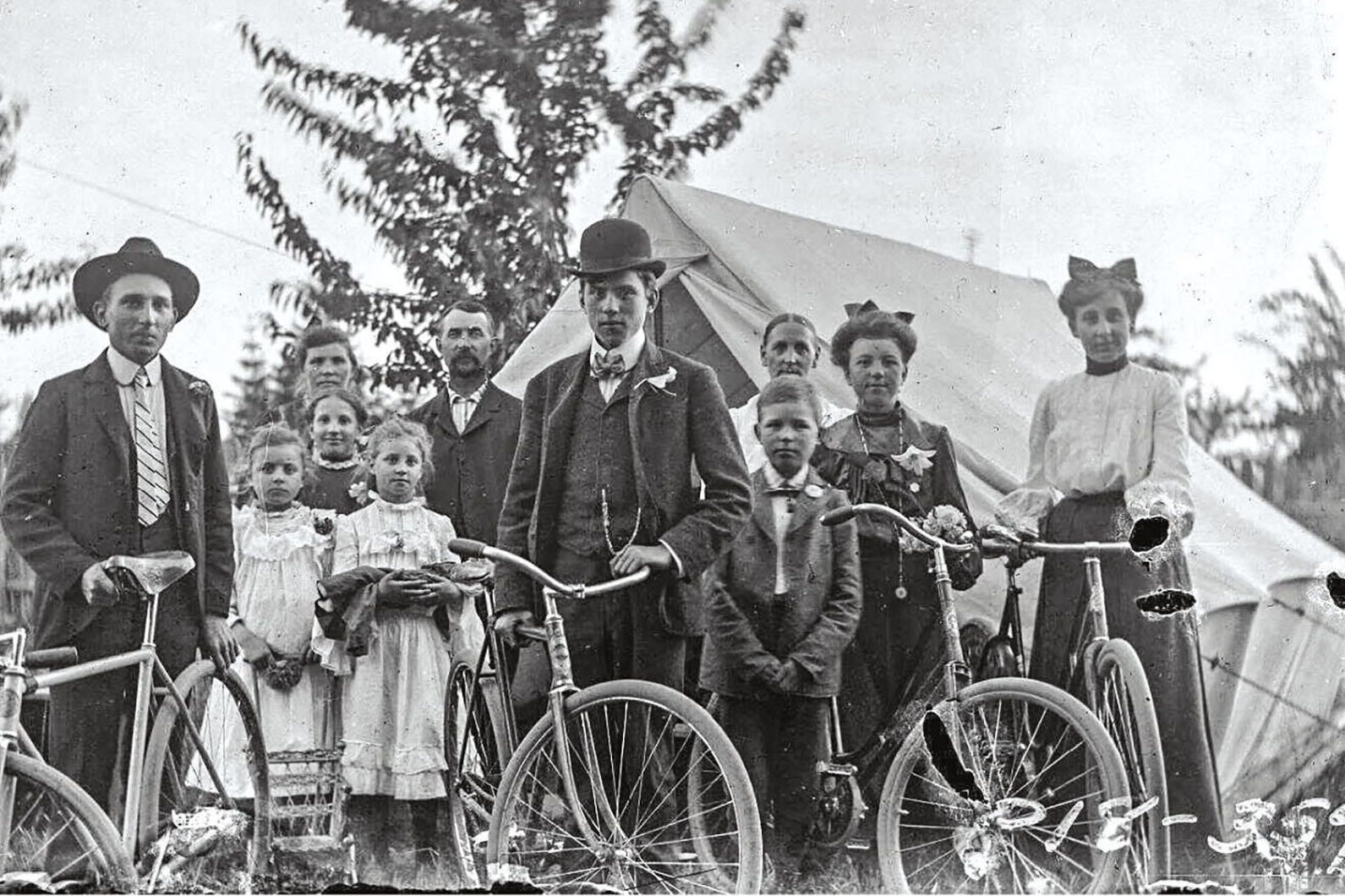
Think Portland Is Obsessed with Bikes Today? Meet the Wheelpeople of 1890s Stumptown.
A grander panorama than that along Portland’s bicycle paths is seldom seen. Lawns, gardens, homes, farms, fields and orchards roll past in rapid succession.... It is a feast for the eye and an inspiration for the mind, for no city on earth has more beautiful suburbs or picturesque scenic surroundings.
So read the first lines of a story in the Sunday Oregonian on September 17, 1899, accompanied by sweet illustrations of smartly dressed, behatted cyclists. It went on: “And no more graceful and expert riders can be seen anywhere than among the wheelpeople of Portland.”
Clearly, Portland has a long history of proclaiming itself the best bicycle city around; 120 years later, we still like to crow about how many of us commute to work by bike (roughly 6 percent, better than Seattle, Minneapolis, or San Francisco), about our 384 miles of bikeways, or about the gobsmacking number of us who like to bike around in our birthday suits.
But this is hardly a new love affair. At the turn of the 20th century, our city was caught in the velo-frenzy sweeping America and Europe, brought about by the arrival of the modern bicycle. Portland at the time was transforming from frontier backwater to buzzing metropolis—the population boomed from about 46,000 in 1890 to more than 90,000 a decade later. The car wouldn’t arrive in significant numbers until 1905 or so, and in this pre-auto age the bicycle seemed to offer it all: a tool for efficient transport but also, just like today, for adventure, spectacle, and daredevilry. (It could also be a menace; more on that later.)
It was, as some might say, the dream of the 1890s.
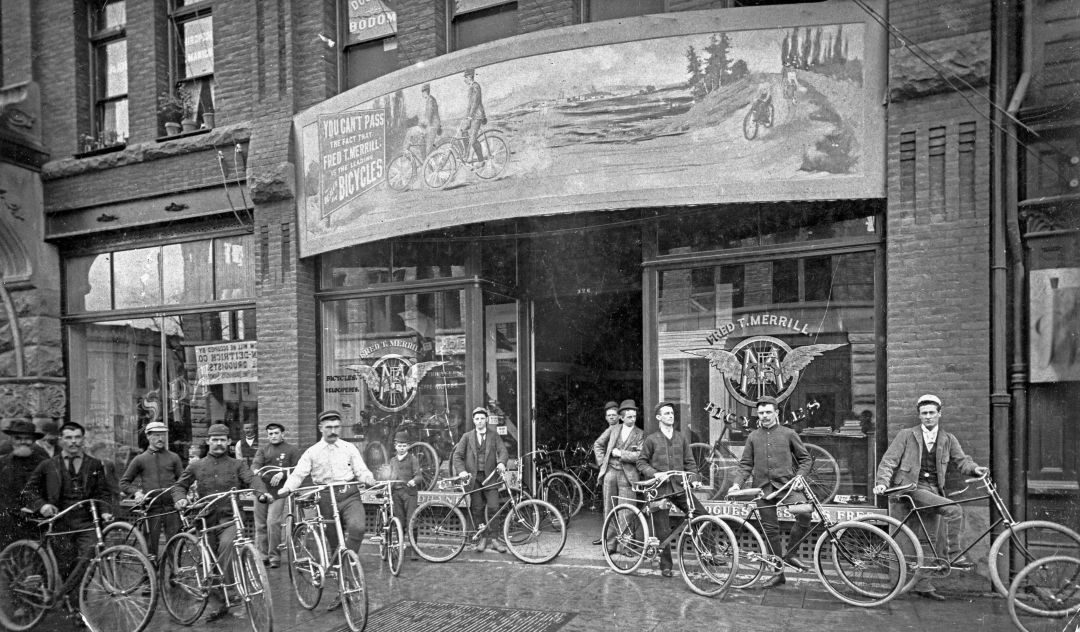
Fred T. Merrill Bicycle Shop in downtown Portland, 1893
Image: Oregon Historical Society
Portland roads looked a touch different 120 years ago. They were mostly dirt: dusty in the summer and muddy in the winter. An early streetcar system crisscrossed the city, and horses pulled commercial wagons and personal carriages. Into this scrum rolled bicycles, and by January 1, 1895, the Oregonian was declaring the “Reign of the Wheel,” with rich and poor alike hopping in the saddle.
An 1896 cycling map gives a glimpse into the era’s riding scene. The map not only marked road quality; it also helpfully indicated taverns (bikes and beer, BFFs even then). OG downtown department store Meier & Frank hawked cycling apparel for both men and women, including a sweater with enviably voluminous sleeves. Portlanders were encouraged to drop in at D. J. Fraser’s for a pre-ride cigar, and at a pharmacy afterward to sip Dr. Barker’s Celery Kola to “restore [their] lost vitality.”
Portland had begun to build dedicated bicycle paths by that time, taking riders farther afield to Milwaukie and Gresham. By 1900, according to historian Evan Friss, there were 59 miles of bike paths within city limits: that was one mile for every 1,500 people, a ratio better than present-day Amsterdam. It was, according to the Oregonian, “a very usual sight to see parties of a dozen to 20, of both sexes.” (Cycling wasn’t limited to gents: “Graceful Women Awheel,” heralded an 1899 headline. It went on: “Portland Girl Bicyclists a Pleasure to Look Upon.”)
Riders packed lunches, the O wrote, or purchased one “at farmhouses or refreshment booths, many of which have been established along the paths.” They availed themselves of local produce: “A party of wheelpeople buy a crate of luscious strawberries, sit by the roadside and have a rural feast, near to nature.”
It wasn’t only bucolic daytime jaunts. “Many of Portland’s macadamized streets present excellent opportunities for moonlight pleasure parties on wheels,” reported the O. “It is hard to realize that there are so many bicycles here, until you observe the gay scene.... The display of headlights is almost bewildering, and costumes are unique and striking.... Collisions are almost unknown, which is a proof of skillful management, considering the very large number of wheels gyrating around.”
That’s right: the spiritual roots of Pedalpalooza stretch back to the 19th century. And the fun didn’t stop there. To celebrate Independence Day in 1895, about 1,000 bicycles formed “without question the greatest street pageant ever seen in the Pacific Northwest metropolis at night.” The O described bikes bedecked with ribbons, one “hidden under a mass of sweet peas and maiden hair fern,” and some sort of float supported by eight bikes, “profusely covered with bunting and topped by a tasteful canopy.” One rider, clearly anticipating Pedalpalooza’s Loud N Lit ride, fastened the rims of his wheels with tiny incandescent electric lights: “When the wheels turned rapidly, they seemed to be enveloped in fire.”
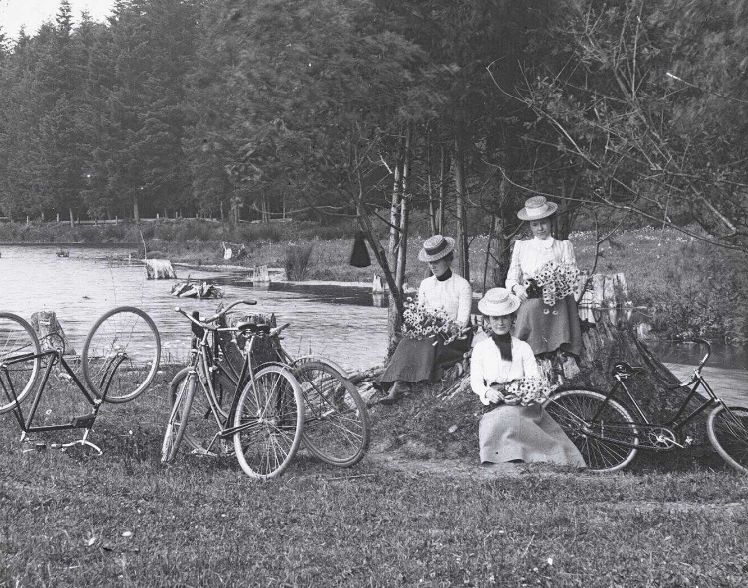
Cyclists with bouquets, 1890
Image: Oregon Historical Society
Not all was copacetic when it came to this new wonder wheel. There was bountiful drama over who was allowed to use the sidewalk, and when. City council passed an ordinance allowing bikes on some sidewalks from November through April, so riders didn’t have to contend with mucky roads. Bike paths, meanwhile, could be wiped out in bad weather or destroyed by livestock (O headline from January 24, 1900: “Cattle on Bicycle Paths: Wheelman Offers Suggestions to Remedy the Evil”). Even several years into the bicycle’s reign, authorities still couldn’t figure out how to regulate the thing: “nobody knows whether a bicyclist is a pedestrian or the driver of a vehicle; whether he has any rights that he can maintain or whether others have any rights they can maintain against him,” griped the O in 1902 under the headline “The Bicycle Anarchy.” (These days? Oregon legislators just clarified that bike lanes do indeed continue through intersections.)
And then there were the scorchers. These wild riders tore down roads and sidewalks at great speed, hunched over their handlebars and trampling anyone in their path. The O teemed with accounts of “these hoodlums, these barbarians on a bicycle,” these “brainless individuals who should be held in check,” along with reports of hit and runs. In one memorable 1899 story, a scorcher, “humping himself along at reckless speed,” hit a “comfortable, easy-going St. Bernard dog that tips the beam at 175 pounds.” The scorcher, his bike a “shapeless tangle of tubes and wires,” took 10 minutes to regain consciousness. (The dog, meanwhile, “had not been troubled in the least.”)
Some cranks took their loathing of cyclists into their own hands. An O story from 1900 told of “a big German” who “goes out of his way to tackle a wheelman on the sidewalk, and dumps him into the gutter with the greatest pleasure and sangfroid.” (The story noted that a scheme had been hatched to avenge this “bicycle-hater.”) Another article recounted how “old ‘codgers’ sometimes expressed their dislike of the new vehicle by strewing tacks and glass in the path of the pneumatic tires.” Flash to the present, when website BikePortland.org offers $1,000 for information about nails littering a bike lane on N Interstate.

Dapper Oregonians and their bikes, 1905
Image: Oregon Historical Society
But cycle fever was fleeting. In 1905, Oregon counted more than 200 cars, and by 1910 the state was registering thousands of passenger vehicles per year. The O soon abandoned reports of hellion scorchers for anxious dispatches about “automaniacs” and swooning descriptions of the car’s “merry honk-honk.” A 1906 headline declared, “Bicycle Paths Disappear: Those in City Are Being Demolished Beyond Repair.”
Paths may have come and gone, but, turns out, the bicycle didn’t vanish. More than a century later, Portland boasts an urban mountain bike park and a near-deranged array of themed rides, as well as groups for cyclists of nearly every style and speed. We owe much to the advocacy of the 1970s and ’80s, when construction began on our current network of bike paths. But it’s not simply that trails have been resurrected, or that all is ducky when it comes to regulation or road sharing. (On the contrary, there’s still grumbling from bike haters, and from disenchanted cyclists who say the city is resting on its laurels.) It’s deeper than that. In Portland, we don’t ride just for transport or exercise. Like those turn-of-the-century cyclists, with their moonlight pleasure parties and pyrotechnic pageants, we ride for the most glorious reason of all: fun.


